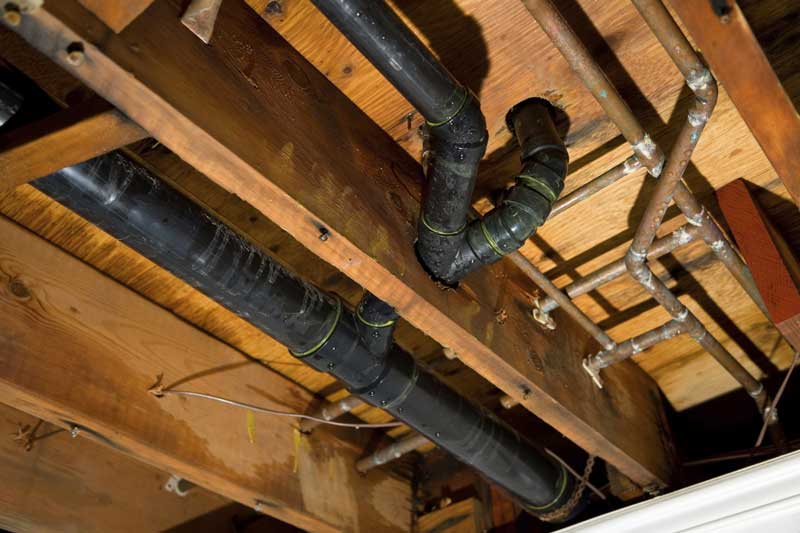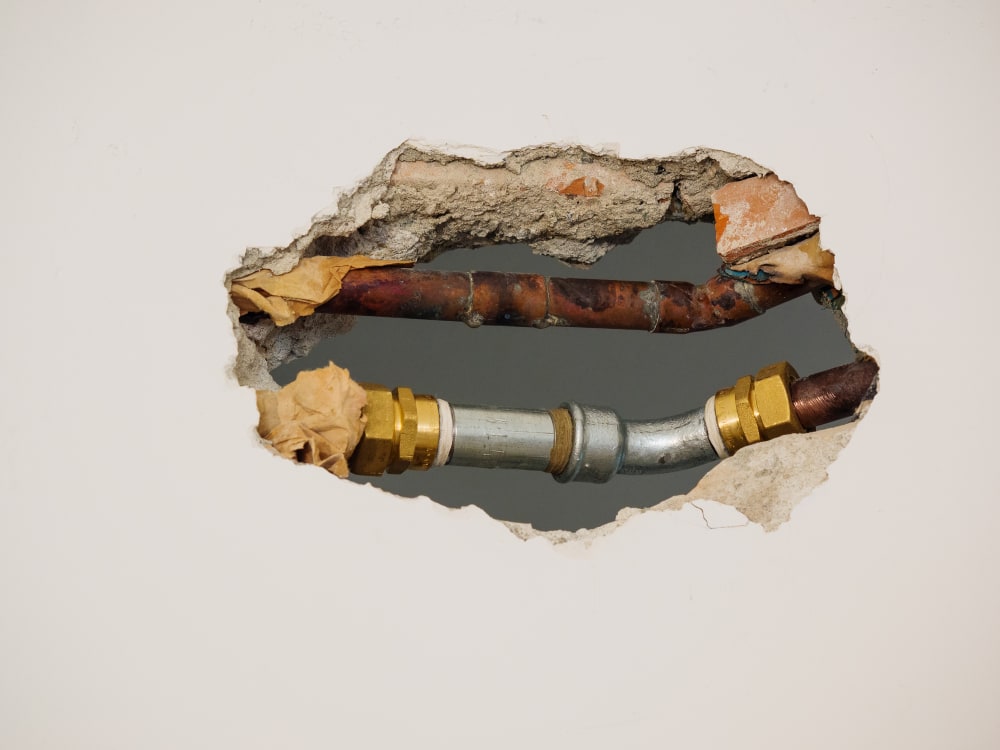What're your opinions concerning Main Plumbing Issues Found in Old Houses?

Older homes commonly include charm, character, and background, yet they can also bring a host of plumbing concerns. Whether you're managing maturing pipes, low water pressure, or leakages, recognizing exactly how to deal with these usual issues is essential to keeping a safe and useful home. In this guide, we'll check out the common plumbing obstacles dealt with by older homes and offer useful remedies to maintain your plumbing in top shape.
Recognizing Usual Pipes Issues
Aging Pipes
Among the most common problems in older homes is aging pipes. Depending upon the era in which your home was constructed, the pipes might be made from materials that have actually degraded with time, such as galvanized steel, cast iron, or perhaps lead. These materials can wear away, become breakable, or create leaks, leading to water damage and prospective carcinogen.
Low Water Pressure
If you're experiencing low tide stress, it could be as a result of mineral deposits, rust inside the pipelines, or old components that are no longer working effectively. This can be a significant inconvenience, especially in areas like showers and sinks.
Dripping Pipelines
Leaks are one more constant issue in older homes, commonly caused by corroded or damaged pipelines. Even little leakages can lead to significant water damage, mold growth, and raised water bills otherwise resolved quickly.
Out-of-date Components
Obsolete pipes components such as faucets, toilets, and showerheads not only look old but may likewise be much less efficient, prone to leaks, or incompatible with modern plumbing requirements.
Pipeline Rust
Rust is a typical issue in older pipelines, specifically those made from galvanized steel or actors iron. Corroded pipelines can restrict water circulation, create staining, and at some point cause leaks or pipeline bursts.
Evaluating the Condition of Your Plumbing
Inspecting Noticeable Pipes
Start by evaluating any kind of noticeable pipelines in your house, such as those in cellars, crawl spaces, or under sinks. Look for indicators of deterioration, leakages, or rust, which can indicate underlying issues.
Looking for Leakages
Look for leakages by inspecting areas around faucets, toilets, and under sinks. You can also monitor your water meter prior to and after a period of no water make use of to identify hidden leaks.
Water Quality Screening
Older pipelines can influence the high quality of your water. Conduct a water high quality test to check for pollutants such as lead, rust, or other contaminations that might be introduced by maturing pipes.
Solutions for Typical Plumbing Concerns
Replacing Aging Pipes
If your home has old, wearing away pipelines, think about changing them with modern products like copper or PEX. This can be a significant financial investment, however it will certainly stop future problems and improve the safety and security and dependability of your plumbing system.
Taking Care Of Low Water Stress
To deal with low tide stress, start by cleaning or changing old fixtures and getting rid of mineral accumulation in the pipes. If the trouble lingers, it might be necessary to change areas of corroded pipelines.
Repairing and Changing Dripping Pipes
For tiny leaks, you can make use of pipe clamps or epoxy putty as a temporary repair. Nevertheless, it's best to change dripping pipelines entirely to stay clear of additional damages.
Updating Fixtures
Upgrading old components to contemporary, water-efficient models can boost your home's plumbing performance and minimize water consumption. Try to find fixtures with the WaterSense label for the very best efficiency.
Handling Pipeline Rust
If your pipelines are rusted, replacing them with corrosion-resistant materials like copper, PVC, or PEX is the most effective service. Regular evaluations and water top quality maintenance can aid prevent additionally rust.
When to Call a Specialist
While some plumbing problems can be taken care of with DIY services, there are times when it's best to contact an expert. If you're taking care of significant leaks, extensive deterioration, or are unsure about the condition of your pipes, an accredited plumber can supply expert analysis and fixing.
Preventive Maintenance Tips
Regular Examinations
On a regular basis check your plumbing system for signs of damage. Catching concerns early can prevent costly fixings down the line.
Water Stress Guideline
Guarantee your water stress is within the advised array to stay clear of emphasizing your pipes and fixtures. A plumbing technician can mount a stress regulator if required.
Water Top Quality Maintenance
Set up water filters or softeners if your water high quality is poor. This can shield your pipelines and components from damages triggered by difficult water or impurities.
Proactive Pipeline Substitute
If your home has very old pipelines, take into consideration aggressive replacement before major issues arise. This can conserve you from emergency situation fixings and water damage.
Conclusion
Handling plumbing concerns in older homes calls for a mix of watchfulness, preventative upkeep, and timely upgrades. By comprehending the common challenges and recognizing when to look for professional assistance, you can ensure your pipes system stays functional and dependable for years ahead.
7 Common Plumbing Issues in Older Homes
Read More Plumbing Articles
Whether you're mulling over purchasing your dream period property, or you already own one, being aware of common plumbing problems in old homes can help you avoid expensive mishaps.
Many plumbing problems in old homes are similar to those faced in newer properties, but some are more prevalent in houses over a certain age. If you've recently bought an old house or haven't had your aging plumbing system inspected in a while, it's worth keeping an eye out for the following issues:
Bad Pipe Materials
Depending on the age of your home, the pipe materials used in your plumbing system may not comply with modern building codes and could be unsafe.
Lead pipes are the most dangerous type of old plumbing pipes. This metal was once used extensively for manufacturing water pipes because it's easy to shape and has a long lifespan. Plumbers also used it to solder joints between pipes made from other materials. However, lead can cause serious health problems, particularly in children. Drinking water from pipes containing lead can lead to lead poisoning symptoms, such as stomach pain and fatigue, so it's essential to replace them if you discover them in your home.
Outdated Fixtures
Even if the previous owners installed high-quality fixtures, these won't be immune to the effects of age and wear and tear. Over time, fixtures can corrode and wear down, increasing the likelihood of leaks and clogs.
Sometimes, an outdated fixture can be a minor irritation that makes using your plumbing system less convenient. However, it's best to maintain older plumbing components carefully and replace them when they show signs of failure to avoid a major leak and water damage.
Corroded or Leaking Pipes
Corroded pipes are a common plumbing issue in old homes. Corrosive substances in the water supply can gradually break down the metal used to make the pipes, eventually causing leaks. Corrosion can also cause sediment to build up, increasing the chances of a clogged pipe. All these issues take time to develop, making them more likely in old house plumbing.
Drain Problems
Older home drainage systems were often installed before the arrival of appliances such as garbage disposals, so they're frequently incapable of handling modern household usage. The result could be frequent clogs or water backing up into sinks and other fixtures.
A failing sewer line is the most serious drainage issue commonly encountered in old houses. This problem is more likely if you've remodeled your home to add more fixtures, placing more pressure on a sewer line not designed for the purpose. Eventually, the line can become clogged, causing unpleasant indoor smells, poor drainage and contaminated wastewater backing up into your fixtures.
Pipe Bellies
Pipe bellies develop when pipes buried in your home's foundation start sagging as the building settles. They create downward slopes, affecting water drainage and increasing the risk of significant blockages. You don't need to worry about pipe bellies in a pressurized main line, as the water pressure prevents the pipes from clogging, but they can cause issues in drain lines.
Root Intrusion
Root intrusion occurs when trees and other shrubs grow roots too close to your sewer line or water service line. Sometimes, the roots penetrate the pipe walls, leading to leaks and soft or wet areas in your yard.
Unfortunately, root intrusion is a more common plumbing problem in old homes. That's because older houses are more likely to have pipe bellies allowing standing water to accumulate, attracting roots to the moist conditions.
https://www.elocal.com/resources/home-improvement/plumbing/faq/plumbing-issues-in-older-homes/

Hopefully you enjoyed our part on Plumbing Problems In Old Homes. Thank you for taking time to read through our article post. In case you liked our blog post please don't forget to pass it around. Thank-you for going through it.
Book Now!